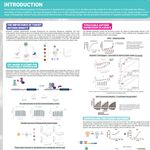
WEBINAR: Better Answers Faster: Drive Instrument Innovation with 95% QE and Computational Imaging
-
Steve Smith, PhD, MBA
Product Manager, Gene Modulation, Horizon DiscoveryBIOGRAPHY
DATE: February 15, 2018
TIME: 10:00 AM PST, 1:00 PM EST
Modern biomedical instrumentation for research or diagnostic applications often rely on cameras as detectors. Cameras in instruments are employed for many purposes ranging from high resolution fluorescence imaging in HTS/ HCS to quantifying protein concentrations in chemiluminescence-based western blotting. Photometrics has long been a partner for instrument builders when a camera is needed. Recently released cameras have pushed the boundaries of imaging technology as well as pioneered the pragmatic application of computational imaging. Computational imaging is the practice of harnessing processing power available in integrated FPGAs to deliver not only images, but better answers faster.
In this webinar, the Photometrics OEM division will share how they encourage their partners to break the model of “cameras are only good for imaging.” Cameras can be thought of as the engine at the center of an instrument and as such can do much more than just produce images. An FPGA is necessary within any camera design to drive pixel clocks. By over-muscling the FPGA, users are given the power to harness natural data flow from sensor – FPGA – host and task the FPGA with offloading some work from the host machine. Many strategies for using computational algorithms will be discussed- from plugging in ‘standard’ routines that Photometrics has developed to efficient use of computational space to deploy custom processing. See how to use computational imaging to help differentiate products and see what sets Photometrics apart from other “just camera” companies. Join us to learn more about how Photometrics develops and uses mathematical routines for image denoising, feature detection and much more.
Learning Objectives:
- Understand the capabilities offered in modern, high QE cameras
- Create familiarity with computational imaging as a tool for instrument builders
- Use case studies to illustrate the utility of computational imaging
WEBINAR: Better Answers Faster: Drive Instrument Innovation with 95% QE and Computational Imaging
Please update your information
Certificate of Attendance
DOWNLOAD CERTIFICATE




